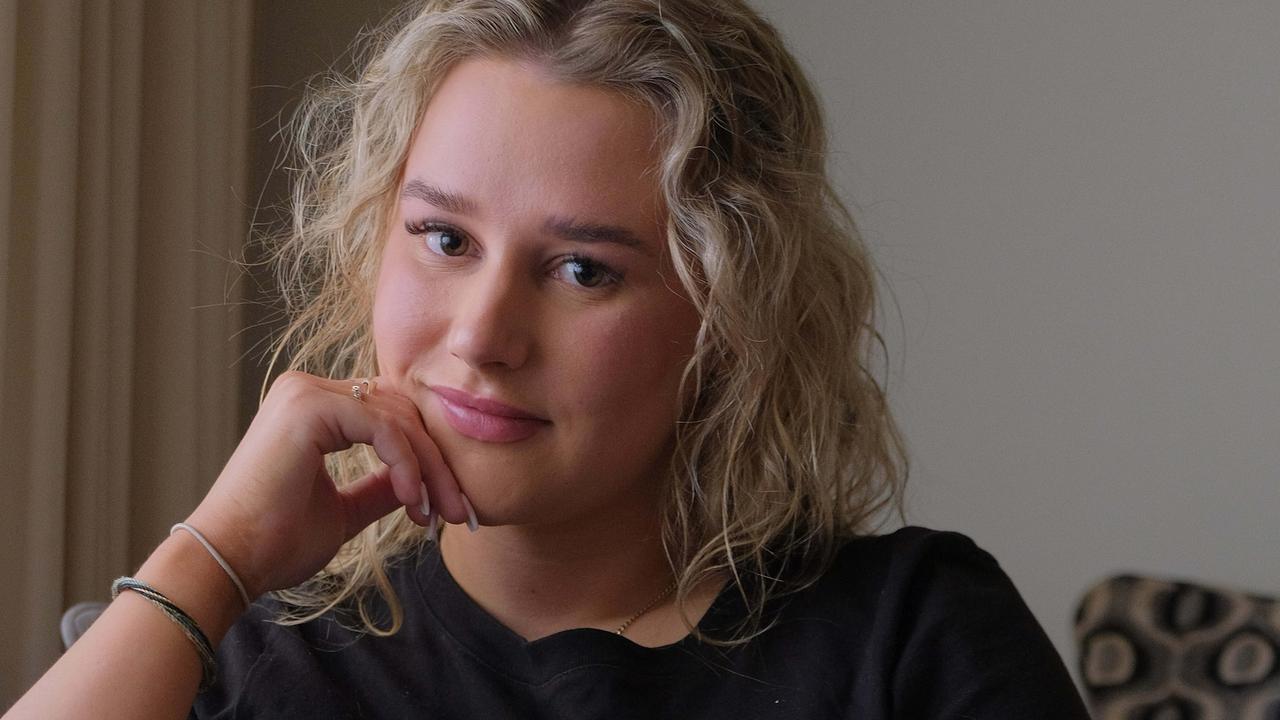Courtney Brice was just 18 years old when she took a pill while partying at a popular Geelong nightclub.
The drug Methylenedioxymethamphetamine, also known as MDMA or ecstasy, went on to change her life forever.
The now 24-year-old Barwon Heads resident said she has to remind herself every day she is not going to die.
She has been left terrified by the idea of being stuck in situations where she cannot easily leave and she must know where the nearest hospitals are at all times.

Ms Brice said even having her car blocked in the driveway is a trigger, as she fears she will not make it to a hospital in time.
It comes as, health workers have warned of an increase in young people, aged 13-15, seeking help for drug support services, while data shows ambulance call-outs for drug related episodes have increased.
According to Turning Point data, drug and alcohol consumption led to 2696 hospitalisations across Greater Geelong in 2019.
Of these, 36 were a direct result of amphetamines, including MDMA, at a rate of 28 more cases than the year.
Ms Brice now hopes to bring awareness to young people, particularly for those who may already be suffering from mental health conditions.
“Kids, just like myself, are so naive at that age, they think they’re invincible,” she said.
“I definitely feel if people already have generalised anxiety or mental health issues then drugs will not mix well with them. Like me, it could have been the slightest thing that set me off and now it’s put me in this situation.
“In school, we were taught about addiction but not really about what drugs could do to your mental health. It is something I have to deal with every day.”

Turning Point data further shows that paramedics were called to 2470 drug and alcohol-related matters in the region during 2020, up 52 calls from the year prior with 227 incidents specifically relating to amphetamines.
However it was in January 2017, when Ms Brice’s life changed forever.
“Everyone was doing ‘bics’ (MDMA) and I had done it a few times before, so I didn’t think much of it,” she said.
“Everything was normal until I got home. I couldn’t swallow, it was like a ball was stuck in my throat. I was pacing around the house and trying to take a deep breath but I couldn’t.”
Ms Brice was rushed to hospital that night, unable to breathe and panicking. While in the emergency department, a steroid tablet was administered, but the relief would only be short-lived.
Soon, Ms Brice would be experiencing these episodes daily.
“Doctors told me the drug I took had rewired my brain and I was in constant fight or flight mode,” she said.
“I was given antidepressants which would take six weeks to kick in and every day from the moment I woke up to the time I went to sleep that ball in my throat was there. It would come in waves of different intensity to the point I would be choking so much I would throw up.
“This happened eight to ten times a day until the medication kicked in.”
Dr Harry Hill, an addiction psychiatrist with Barwon Health, said experimentation with drugs and alcohol has become a part of many young people’s lives.
“It is concerning … drug and alcohol use among young people, particularly adolescents, leaves them susceptible to permanent damage, as their brains are still developing,” he said.
“These harms can range from physical altercations and assault to infections or organ damage. It can also lead to a wide range of mental health problems, including anxiety, depression and psychosis.”
Dr Hill describes a bi-directional relationship that often exists between substance use and panic attacks.
He said experiencing anxiety and panic can lead to increased use of substances, like alcohol, cannabis, stimulants such as cocaine and methamphetamine or opioids, which at the same time, can lead to worsening anxiety and panic.
“There are many factors, including social and genetic, as to why substances affect people in different ways, such as how quickly the substance is metabolised and removed by the body, sensitivity to different drugs based on the receptors in the brain that the drugs bind to, and the development of tolerance over time,” he said.

In 2017, Ms Brice was diagnosed with panic disorder but in 2021, after briefly coming off her medication, her diagnosis was upgraded to severe panic disorder.
Before the night in January, Ms Brice described herself as suffering from general anxiety but was otherwise a “free-flowing person”.
While the beautician and local business owner appears to be doing much better, she says her life still consists of daily challenges and medication.
“When I’m not on medication, I am fully housebound, I can’t leave, I struggle to get up and even have a shower,” she said.
“My panic attacks last between 15 minutes to an hour, eight to ten times a day.”
“With the medication, I can work, I still have sh*t days, but I can go out now, I can leave the house and live my life as normally as I possibly can. It saves my life.”
In 2019, the Australian Institute of Health and Welfare revealed that 24 per cent of young people aged 14-24 had engaged in illicit drug use, with the most commonly used substances including marijuana, ecstasy and cocaine.
In a separate study, among young people aged 19-29, the AIHW found the average age young people first tried drugs was at 17.
BCYF’s alcohol and other drugs and mental health services manager Josephine Taylor says their service works with young people to provide information, support and counselling.
“In the 16-to-25-year age group, referrals and access have remained stable, however we are seeing an increase in younger people aged around 13 to 15 accessing our service, often referred via schools and/or parents,” she said.
Ms Taylor said over the past two years there had been a decrease in young people using drugs such as MDMA, but she noted cocaine use was becoming more prevalent.
“Physical anxiety symptoms including chest tightness, nausea and rapid thoughts are being reported,” she said.
“We’re also seeing an increase in social-based anxieties, such as paranoid thoughts and difficulties managing social situations.”
However, she said ongoing symptoms including panic attacks and anxiety were more common after changes in drug use like using different drugs or larger quantities than usual.
“Symptoms depend on factors such as the severity of substance use, predisposition to the effects of particular substances and those side effects associated with each substance or polysubstance use patterns,” she said.
“Substance use can affect the developing adolescent brain and cognitive functioning, it can impact on relationships, social connections and contribute to other issues like housing, financial security and involvement in youth justice.”
Young people or their families seeking information or support can contact BCYF’s Alcohol & Other Drugs team for a confidential conversation on 1300 022 293, email aodintake@bcyf.org.au or visit bcyf.org.au.



Add your comment to this story
To join the conversation, please log in. Don't have an account? Register
Join the conversation, you are commenting as Logout
Truckie jailed for a decade over crash that killed ‘much-loved’ mum
Chilling text messages sent by a truck driver in the days before he killed a woman in a horror Bellbrae crash reveal he was knowingly driving fatigued and “almost predicted” the tragedy.
‘Landmark development’: $10m apartments proposed for Highton
A $10m “landmark” apartment complex, set to transform two ageing houses into a modern multistorey development, is being proposed for a prime location in Highton.